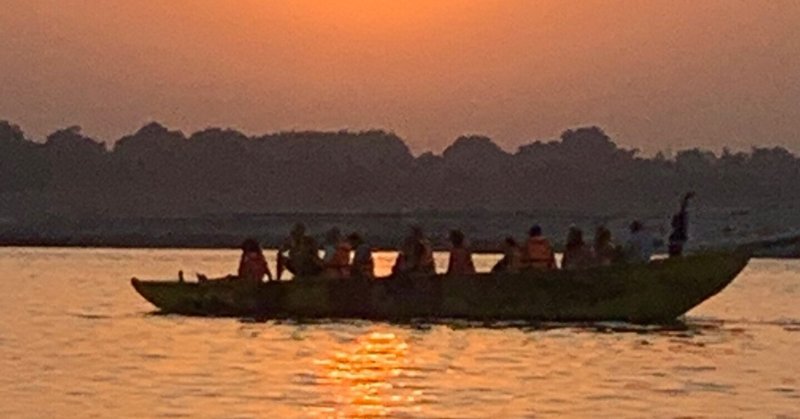
No.1 『女性と水 尊厳は守られるのか』 "Women and Water" (インド)
1.作品紹介
2014年製作/インド/作品時間65分
監督:ノセム・コラード
2015 環境映画祭(ボストン)グリーンフィルム賞受賞
2014 コンコルディア映画祭(アルゼンチン)最優秀長編映画賞受賞
インドでは、水道のないところで暮らしている人々が大勢います。水汲みは女性の仕事です。井戸や川など離れた水場まで水がめを運び、家事に使うための水を毎日8杯、9杯も汲むのです。インドでは、このように今なお自然の水が人々の命を支えています。ところがインドの水資源の汚染が深刻になっています。その水は、様々な病を引き起こします。下痢や高熱、腸チフスや肝炎などたくさんあります。水を煮沸するためには水を沸かすための薪が必要ですが、1日に何度も沸かせるだけの薪がありません。汚染した水に触れる女性たちは病気に苦しみます。そしてインドの子どもの死亡原因第二位は汚染水なのです。
*3,018ワード、字幕数407枚、作業日数4日間
2.作品の構成
この作品は4つのパートに分かれている。
First Story: Birth -- Bharathi「第1話:誕生、バラティ」
Second Story: Growth -- Seema「第2話:成長、シーマ」
Third Story: Development -- Nanda「第3話:発展、ナンダ」
Forth Story: Death -- Laskhmi「第4話:死、ラシュクミー」
第1話から第4話まで人間の人生に例えたタイトルがついており、それぞれ4人の女性たちの日常を描いている。どの女性たちにも共通しているのは毎日水汲みから始まり家事に追われる厳しい生活だ。彼女たちが話す言葉はヒンディー語で、インド社会の現状を分析している知識階層の女性たちが話す言葉は英語である。
3.Key words and phrases
have access to ~ = ~へのアクセスがある、手に入れられる
fetch water = 水を汲む
(daily / house) chores = 家事
contaminated water = 汚染された水
improved water = 改善された水(汚染されていない水)
sewage = 下水
filth = 汚物
arsenic = ヒ素
fluoride = フッ素
infection = 感染
diarrhea = 下痢
typhoid = 腸チフス
hepatitis = 肝炎
gynaecological = 婦人科系の
better off = 暮らし向きがよくなる、マシになる
sanitation = 公衆衛生、下水(汚物)処理
defecation = 排泄(*feces = 便)
urine = 尿
illiterate = 読み書きができない(⇔ literate)
untouchable = 触れられない, (theをつけて) 不可触民、ダリット
hide = 皮革、動物の皮
purify = 浄化する
Ganges (river) = ガンジス川
cremation = 火葬、荼毘(*動詞はcremate)
4.英文と日本語訳
Day 1(妊娠中の女性バラティの話)
In India about 88% of the total population has some form of access to improved water sources. But only a small proportion actually have access to water in their homes. In cities houses have water. They have running water in the bathroom and kitchen. We don't have these facilities. In the morning I fetch five pots and another three or four in the afternoon. I use the water I bring the afternoon to wash and prepare dinner. If any water is left over from the day before, I use it the following day. (93 words)
インドでは全人口の約88%の人々が何らかの形で改善された水を飲むことができます。しかし、家で飲むことができるのはほんの限られた人たちだけです。大きい街だと家に水道があります。風呂場や台所でちゃんと水が流れます。ここには水道なんてありません。私は朝5個 午後3~4個の水がめで水を汲みます。午後に汲んだ水で洗い物や夕食の準備をします。水が少しでも残ったら翌日につかいます。
Day 2(農村開発信託代表の話)
Even when drawing ground water, some of the drinking water is highly contaminated by arsenic and fluoride. And that is leading to a range of diseases. There are many people who drink contaminated water. This causes many waterborne sicknesses, many diarrhea, many fevers. Many problems of typhoid, hepatitis and other sicknesses. (51 words)
地下水を手に入れても、ヒ素やフッ素で汚染されていて飲み水には適していません。その水は様々な病気を引き起こします。汚染水を飲む人はたくさんいます。彼らは水由来の病気にかかります。下痢や高熱腸チフスや肝炎などたくさんあります。
Day 3(経済成長研究所職員の話)
Now many of our rivers are hugely polluted with industrial and human waste.
Women suffer from a range of gynaecological and other diseases because of exposure to contaminated water sources. The second largest reason for child death in India is dirty water. During the monsoon season in Mumbai, the rain water runs into a lake. But in the slums the drains are blocked up. Our houses flood with the heavy rains. There's no light or air. We sleep in the middle of filth and mosquitoes. (84 words)
産業や日常で出た廃棄物で多くの川が汚染されています。女性たちは婦人科系や他の病気に苦しんています。汚染された水に触れるからです。インドの子どもの死亡原因で第2位は汚染水なのです。ムンバイでは雨季になると雨が湖に流れます。でもスラム街では流れがせき止められ、大雨で家が浸水します。明かりも新鮮な空気もなく、汚物や蚊に囲まれて寝るのです。
Day 4(スラム街の女性ナンダの話)
Life's hard here. We have to live in the slums but we are no better off despite our efforts. We live in poverty. We store water in plastic bins because we don't have running water. We don't know if the water is drinkable because it comes from the sewers. The rich area of the city always has water. People have a continuous supply of water in their homes and factories. And here in the slums we only get two hours of water a day. We have two hours to do all our chores and to store water in a plastic drums, otherwise we would be without water for the rest of the day. (113 words)
生活は大変よ。スラムで生きていくしかない。どんなに頑張っても暮らしは良くならない。貧しいままよ。水道がないから水はプラスチックの容器にためるの。水は下水道からくるから飲めるかどうかも分からない。都市の豊かな地域ではいつも水がある。家庭や工場でたえず水の供給があるわ。でも、ここスラムでは1日に2時間しか水を使えない。その2時間ですべての家事をして水をためるの。プラスチック容器にね。そうしないと あとは水なしで暮らさないといけない。
Day 5(科学環境センター職員の話)
Sanitation is going to be one of the biggest challenges we have. Mahatma Gandhi said "Sanitation is more important than independence". On a war footing we have to make it our obsession to make sure that there is no open defecation and everyone has access to a toilet. But we also have to understand that this is also difficult for the poor. Especially if there is nowater the toilet will not work. It is an inhumane and unacceptable problem.
(79 words)
公衆衛生は最も難しい問題の1つです。マハトマ・ガンディーは「公衆衛生は独立より大事だ」と言いました。公衆衛生向上のためには誰もがトイレを使い、屋外排せつをしないことを徹底する必要があります。しかし、貧困層にとっては簡単なことではありません。水がなければトイレは機能しないからです。非人道的で受け入れがたい問題です。
Day 6(不可触民ラクシュミーの話)
Only the untouchables can touch lifeless beings at work. We are dalits, and belong to the lowest caste in India. Other castes believe we're unclean and diry like the things we touch. If I had money like them, I wouldn't work here either. Our work is unpleasant and hard. When we work with dead animals, and clean the hides we use chemicals. These are bad for us and we don't have any protection. We run the risk of getting sick and our colleagues are dying. None of us live over 60 because of the chemicals. Our hides are bought by Americans and Europeans. (103 words)
不可触民だけが仕事で死んだ動物にさわれます。私たちはカーストの最下層ダリットです。私たちは汚いものをさわるので同じくらい不浄だとされています。お金があればこんな仕事はしたくありません。不快でつらい仕事です。死んだ動物を扱い皮をきれいにするためには薬品を使います。この薬品は体に悪いのですが防護服もマスクもありません。私たちは病気になる確率が高く同僚たちはどんどん亡くなっています。60歳以上 生きる人はいません。すべてその薬品のせいです。皮は欧米人が購入します。
Day 7(ダリット保護団体代表の話)
If a dalit takes water from the same well or fountain as other castes, they are physically attacked. They call the priest and he performs various purifying “pujas”. The most important ingredient he uses to sprinkle the area and mix water with cow urine. By mixing water with cow urine they believe the water contaminated by the dalits gets purified. Water is a receptacle of death but not in the sense of waste. In a sense of returning to the earth. You place it back into the water from where all life emerges, the things you have used in your various activities. Cremation on the banks of the Ganges is a necessary tradition. It will continue to happen no matter what the state of the Ganges because this is what people do. (132 words)
ダリットが他のカーストの井戸や泉を使おうとすると暴力で排除されます。
彼らは司祭を呼んで “プジャ” という清めの儀式をします。司祭が行う最も大切なことは牛の尿を混ぜた水をまくことです。水に牛の尿を混ぜると汚染された水が清められると信じています。水は死を受け入れる場所です。命が返りまた生まれる場所です。日常生活で出たゴミを捨てる場所ではありません。ガンジス川での火葬は伝統です。川の状態がどうであれ続きます。大切な儀式だからです。
5.まとめ「インドの今とこれから」
インドには未だにカースト制度が存在している。この作品でも社会における貧富の差がはっきりと描かれており、下層階級の人々の日々食べて生きていくだけで家畜にも近い生活の様子に暗澹とした気持ちにさせられる。スラム街に暮らす人々は日々の水にも困り、ごみを漁りペットボトルを集めては子供の教育費に当てている。家の中に水道やトイレはない。豊かな暮らしをする人々が出した汚水がスラム街で淀み、まるで下水のような川が家の近くを流れ、排泄も川で済ませている。汚水による子供や婦人科系の病気が多いそうだ。作品の中で、インタビューを受ける知識階級の女性たちはきちんとした服装をして英語をしゃべり、政府がどうにかしないといけないと訴えているが、その声が届く日は来るのだろうか。
出典:アジアンドキュメンタリーズ
『女性と水 尊厳は守られるのか』 "Women and Water"
単品視聴(495円)、月額見放題(990円/月)
字幕翻訳者:浦田貴美枝
Blog:アラカンからのチャレンジ (ameblo.jp)
著書:『夢を叶える字幕翻訳者の翻訳ノート』https://x.gd/ySA4m
Copyright@2024 Kimie Urata note
この記事が気に入ったらサポートをしてみませんか?
